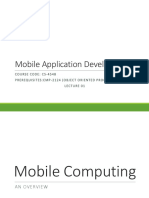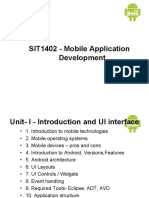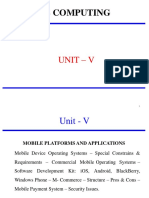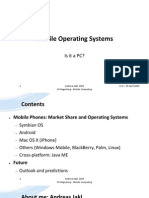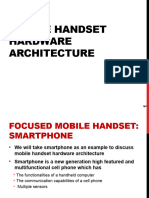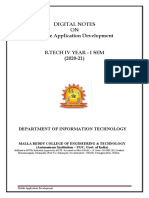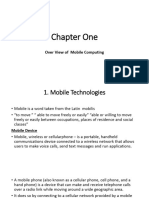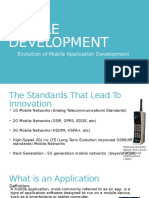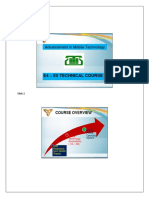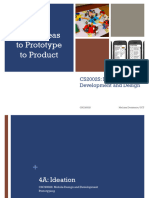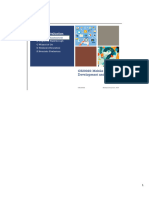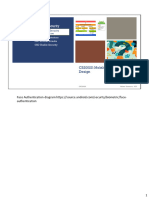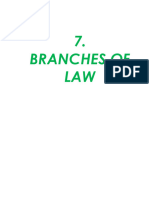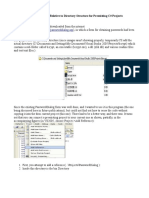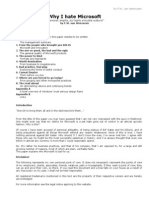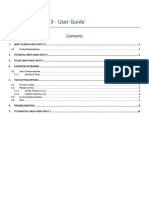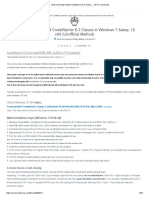+
Mobile
Hardware
CS2002S: Mobile
Development and Design
CSC2002S Melissa Densmore, UCT
1
� +
Moore’s Law
Number of components on a given piece of silicon
doubles ever 18-24 months
Gordon Moore, Intel
Melissa Densmore, UCT CSC2002S
Bob Colwell, former Intel chief architect:
Project death of moore’s law in 2020 or 2022 – due to physical constraints
But innovation will still continue!
2
� +
Moore’s Law at Work
Car and Satellite Phones Truly Portable Handheld Flip Phone
1983 1989 1992 1996
Customizable Camera, Internet/WAP Smartphones iOS
1999 2002 2003 2007
WebOS, Android Windows 8 Mobile WiFi everywhere Ubiquity
2009 2013 2017 ????
Most selections from http://www.webdesignerdepot.com/2009/05/the-evolution-of-cell-phone-design-between-1983-2009/
Melissa Densmore, UCT CSC2002S
Android introduced in 2008
3
� +
Smaller… then bigger
Melissa Densmore, UCT CSC2002S
If we look at the evolution of mobile phones, what do we see?
Screen size and resolution changing
Computing power increasing
Power requirements increasing
All of these have different implications for computing
4
� +
Processor
Desktops: Intel
• High power consumption
• Computationally powerful
Laptops: Intel
• Power conserving
• Atom, Haswell, Broadwell, Skylake
Mobile Devices: ARM
• Optimized for low power consumption
• “Disrupts” Intel’s market
Melissa Densmore, UCT CSC2002S
Intel missed the boat!
ARM
RISC architecture licensed from ARM to many manufacturers
Optimized for low power consumption on low‐end devices
Low‐end routers, sub‐100 computers
5
� +
Optimizing for Mobile
High speed (but fanless)
Low power consumption
Multi-core
Melissa Densmore, UCT CSC2002S
Image from https://www.evelta.com/blog/a‐quick‐introduction‐to‐smartphone‐
architecture/
6
� +
Who is inside?
Melissa Densmore, UCT CSC2002S
Snapdragon and Mediatek’s Dimensity chips are consistently ranked amongst the highest
performing
Rankings of phone performance:
https://nanoreview.net/en/soc‐list/rating
https://www.antutu.com/en/doc/127805.htm
7
� +
Melissa Densmore, UCT CSC2002S
Source: https://www.statista.com/statistics/233415/global‐market‐share‐of‐applications‐
processor‐suppliers/
Dimensity
8
� +
Demands on Performance
Melissa Densmore, UCT CSC2002S
But also consider how rankings are evaluated – they are sums are different metrics
9
� +
Multi-Core Processors
Multi core makes a big
difference
One core to run the radios
One core to run the OS and apps
Especially important for multi-
tasking and video
Cores clock dynamically
More speed, more power!
Write code efficiently or beware
the wrath of reviewers!
Melissa Densmore, UCT CSC2002S
https://faq.covid19.nhs.uk/article/KA‐01163/en‐us
https://www.siliconrepublic.com/enterprise/battery‐drain‐covid‐tracker‐ireland‐app‐google
https://techengage.com/top‐battery‐draining‐apps‐to‐avoid/
10
� +
08B Resources
Melissa Densmore, UCT CSC2002S
https://www.cnet.com/how‐to/5‐tricks‐to‐free‐up‐space‐on‐your‐android‐phone/
11
� +
Smartphone Architecture
Melissa Densmore, UCT CSC2002S
Diagram from: https://www.evelta.com/blog/a‐quick‐introduction‐to‐smartphone‐
architecture/
12
� +
Melissa Densmore, UCT CSC2002S
https://amyingramblog.wordpress.com/2016/03/01/sensor‐technology‐your‐smart‐
phone‐is‐full‐of‐them/
13
� +
Storage and RAM
Limited RAM, Storage on a microSD card
Melissa Densmore, UCT CSC2002S
Android used to require that main storage is on the SD card (which often gets stolen or
compromised in our rural deployments)
14
� +
Melissa Densmore, UCT CSC2002S
2022 Link
https://datareportal.com/reports/digital‐2022‐south‐africa
15
�+
Communications
GSM, CDMA, WiFi
Melissa Densmore, UCT CSC2002S
16
�+
The Network
https://en.wikipedia.org/wiki/Mobile_broadband
Melissa Densmore, UCT CSC2002S
17
�+
Melissa Densmore, UCT CSC2002S
18
� +
Battery Life
Melissa Densmore, UCT CSC2002S
Ads consume not only data but energy on your phone
https://greenspector.com/en/top‐2018‐least‐energy‐hungry‐browsers‐for‐your‐
smartphone/
The following course is then realized:
Launching the browser on the home page configured at installation
20‐second wait (foreground): measures the impact of the home page.
For 3 sites of different types (Wikipedia, lemonde.fr, pinterest): Launch of the page, Scroll
at the bottom of the page, wait of 20 seconds
Launch again of the 3 sites to evaluate the impact of the caching
Background browser setting (background): lets you see how the browser behaves when it is
not in front of the phone.
19
�+
Implications for Programmers
Errors have cost implications for users!
Network
Efficiency
Memory
Efficiency
Algorithm
Efficiency
Melissa Densmore, UCT CSC2002S
20
�+
Melissa Densmore, UCT CSC2002S
21
� +
08C Mobile Operating Systems
Melissa Densmore, UCT CSC2002S
Image Credit: https://medium.com/@mehulp89/android‐vs‐ios‐a‐comparison‐of‐concepts‐
b631d2c2e465/
22
�+
Most Mobiles
Run at 100 MHz (PC circa 1995)
Have no floating point unit or GPU
Have QVGA screens
… and no touch screen
Melissa Densmore, UCT CSC2002S
23
�+
Software Development
On PC On PC On Cloud
Cross Compilation, App Stores, Licensing,
Coding
Emulators Code Signing
On Devices On Devices and PC
Installation,
Debug Debug Debug
Incompatibility
Melissa Densmore, UCT CSC2002S
24
�+
iOS
iPod, iPad, iPhone OS
Based on OSX – BSD Derivative
Objective-C
needs a Mac
Locked ecosystem
Complex developer licensing
99USD per year
30% of revenues
Uniform target devices
Melissa Densmore, UCT CSC2002S
25
�+
Android
A Linux variant purchased by Google
and maintained by the Android Open
Source Project (AOSP)
Java/Kotlin (Android Runtime
Environment)
Reusable Components
One OS, Many devices
hardware compatibility
Low cost of entry
25USD flat fee
30% of revenues
Melissa Densmore, UCT CSC2002S
26
�+
J2ME
Supported by most feature phone
OSes
Often device-specific libraries
available
Installation is cumbersome!
No app store!
Melissa Densmore, UCT CSC2002S
27
�+
Fringe/Dead OSes
Windows Phone
RIM/Blackberry
PalmOS/WebOS
• Great PDA operating system
reinvented with a sleek look and
feel
MeeGo/QT
• Dead end Unix platform from
Intel/Nokia
Bada
• Samsung platform
• Optimized for feature phones and
smartphones
Symbian
• Most popular
• Designed for low memory, battery
and processor
• Realtime and multi-tasking
• Open source
• But no more Nokia
Melissa Densmore, UCT CSC2002S
28
� +
RIM/Blackberry
Originally a business phone due to
integrated push messaging on the
platform
Most hardware incorporates qwerty
keyboard
Popular in SA due to “free”
messaging service
But dying because it solves a
problem that no one has any longer
Melissa Densmore, UCT CSC2002S
Blackberry now runs android…
29
�+
Windows Phone
Windows CE and Windows Mobile
never succeeded
Modern UI completely redesigned
for touch and shared look and feel
with tablets and touchscreen PCs
Live Tiles, Xbox Live
Licensed to hardware partners (e.g.
HTC)
Melissa Densmore, UCT CSC2002S
30
�+
OS Market Shares by Region
Melissa Densmore, UCT CSC2002S
31
�+
Food for thought
Next: Mobile Software Architectures
How do you choose which platforms to support?
What are some constraints that mobile platforms have that
traditional computing does not? How does this influence
your code and software engineering practices?
Where do you think mobile devices will be 5 years from
now? 10 years from now?
Microsoft bet on convergence – building a seamless experience
across devices
Will Apple products still dominate the market?
Where is Android going?
Melissa Densmore, UCT CSC2002S
32

